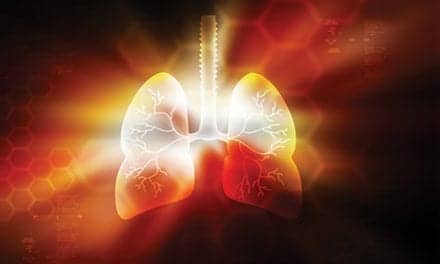Despite women’s increased vulnerability and susceptibility to COPD, cases of COPD in women often go misdiagnosed or unidentified in the earlier stages of the disease.
By Lisa Spear
The biological sex that people are born with influences how their lungs develop and function throughout their lifespans. A female lung is smaller, and potentially more vulnerable to pollutants that can damage the lung tissues.[1] Despite women’s increased vulnerability and susceptibility to COPD, cases of COPD in women often go misdiagnosed or unidentified in the earlier stages of the disease.
“There is some concern that since COPD is considered ‘an old man’s disease’ that women are not getting diagnosed properly,” said MeiLan Han, MD, MS, a professor of pulmonary medicine at the University of Michigan and a spokesperson for the American Lung Association.
Still, diagnoses of COPD in women have outpaced those of men in the United States, which is likely due to the uptick in smoking by women in the ’60s and ’70s.[2] Prior to that time cigarette smoking in women was unusual.

“Part of the rising burden of COPD in women is related to cigarette smoking. But part of it is truly, in my opinion, related to an increased susceptibility of the female lung to particulate and exposures,” explained Dawn L. DeMeo, MD, MPH, an assistant professor at Harvard Medical School in Boston. DeMeo suggests that COPD should always be considered when evaluating any woman with any history of smoking.
Globally, women are the majority of people diagnosed with COPD who have never smoked. These women are often exposed to indoor air pollution through biomass fuels used for cooking, according to a report published in the peer-reviewed, open access journal BMJ Open Respiratory Research.[3]
“Poor ventilation contributes to a lot of COPD in women in particular because of woodstoves and biomass fuels in the home,” said Han. “…I think we forget how common wood burning stoves are.”
A recent analysis of mortality across three time-periods, between the years 1959 to 2010, published in the New England Journal of Medicine, showed that the risk of death from cigarette smoking has continually increased among women [4], and the risk of death from COPD is now about the same for men and women.[5]
COPD is also a condition that may show up at a younger age in women than in men, said DeMeo, a pulmonary and critical care specialist who focuses on advanced lung disease in women with COPD at Brigham and Women’s Hospital. “Interestingly there has been a fair amount of research that has suggested that women who present with COPD are generally younger, and will have smoked on average less than men with COPD,” said DeMeo.
Symptoms of COPD also tend to be more severe in women than men. Women typically present with more shortness of breath and are at a higher risk of acute exasperations. Women also appear to be at higher risk of comorbidities, including anxiety, depression and other comorbid conditions.
“We also know that women have more flare-ups of this disease,” said Han. A study, published in the International Journal of Chronic Obstructive Pulmonary Disease, [6] found that compared to men with COPD, younger women who experience COPD had a greater likelihood of more severe dyspnea, airflow limitation, and a greater risk of exacerbations. These differences were less pronounced in older women with COPD. However, older women remained more likely to experience severe dyspnea and to manifest more severe COPD than older men, despite less reported frequency of smoking.
Women also tend to develop COPD with lesser smoking exposure history, explained May-Lin Wilgus, MD, a pulmonologist and assistant professor at University of California, Los Angeles (UCLA).
“For every cigarette smoked, women seem to be more susceptible to the lung-related damage that leads to COPD. And we don’t fully understand the mechanism of that susceptibility. It is an area of active research,” said DeMeo, a coauthor on the study.
“We know that starting from the time of lung development that estrogens and testosterones have different impacts on lung growth and development, so even from the earliest times of lung development we know that the lung is very susceptible to sex hormones. More research needs to be done to really understand the full impact of hormone biology and COPD.”
COPD is also frequently misdiagnosed as asthma in women. To counteract this trend, DeMeo suggests that clinicians take a more liberal approach to testing their patients’ pulmonary function with spirometry. “Spirometry in general tends to be underutilized,” said DeMeo.
Additionally, when considering a COPD diagnosis, providers should conduct a thorough interview to establish a history of all inhaled substances, not just asking about cigarette smoke, but also incorporating questions about electronic cigarettes and cannabis use. Han suggests providing patients with the COPD Assessment Test (CAT), a standard questionnaire that is designed to measure the impact of COPD on a person’s life.
If COPD is identified, it is also essential to advise patients that COPD is a highly treatable condition and inform them that it is never too late to stop smoking, said DeMeo.
Since there is often limited time to provide an adequate amount of educational materials to the patient, Han suggests recommending reliable online resources. There are a number of websites where patients can learn more about their condition, including the American Lung Association or the COPD Foundation’s websites.
“Women are going to look for online resources, so I think it is important to point them toward reputable outlets,” said Han.
RT
Lisa Spear is a former associate editor of RT Magazine. For more information, contact [email protected].
References
- Rose L, MHan MK, et al. “Female sex and gender in lung/sleep health and disease. Increased understanding of basic biological, pathophysiological, and behavioral mechanisms leading to better health for female patients with lung disease.” Amer J Crit Care Med. 2018;198(7):850-858. Accessed doi:10.1164/rccm.201801-0168WS.
- Aryal S, et al. “Influence of sex on chronic obstructive pulmonary disease risk and treatment outcomes.” Int J Chron Obstruct Pulmon Dis. 2014;9:1145-54. Accessed via doi:10.2147/COPD.S54476.
- Sana A, et al. “Chronic obstructive pulmonary disease associated with biomass fuel use in women: a systematic review and meta-analysis.” BMJ Open Respiratory Research. 2018:12;5(1). Accessed doi: 10.1136/bmjresp-2017-000246.
- Thun MJ, et al. “50-year trends in smoking-related mortality in the United States.” N Eng J Med. 2013;368:351–364. Accessed via www.nejm.org/doi/full/10.1056/NEJMsa1211127
- Carter BD, et al. “Smoking and mortality—beyond established causes.” N Eng J Med. 2015;372: 631–640. Accessed via www.nejm.org/doi/full/10.1056/nejmsa1407211.
- DeMeo DL, et al. “Women manifest more severe COPD symptoms across the life course.” Int J Chron Obstruct Pulmon Dis. 2018;13:3021-3029. doi: 10.2147/COPD.S160270









